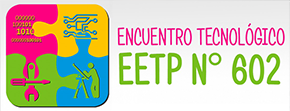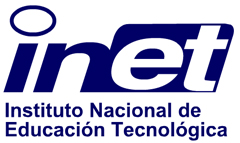What Is Neuro-Symbolic AI And Why Are Researchers Gushing Over It?
When you have high-quality training data Connectionist AI is a good option to be fed with that data. Even though this AI model gets smarter as data is fed into it, it still needs the support of accurate information to start the whole learning process. It is most commonly used when there is a heap of medical images that are required to be verified by humans for correctness and assign annotations for contexts.

This kind of meta-level reasoning is used in Soar and in the BB1 blackboard architecture. Japan championed Prolog for its Fifth Generation Project, intending to build special hardware for high performance. Similarly, LISP machines were built to run LISP, but as the second AI boom turned to bust these companies could not compete with new workstations that could now run LISP or Prolog natively at comparable speeds. Our chemist was Carl Djerassi, inventor of the chemical behind the birth control pill, and also one of the world’s most respected mass spectrometrists. We began to add in their knowledge, inventing knowledge engineering as we were going along.
From symbols and relations to logic rules
Additionally, it increased the cost of systems and reduced their accuracy as more rules were added. Subsymbolic AI models (e.g., neural networks) can learn directly from data to reach a particular objective. The models like neural networks do not even require pre-processing input data since they are capable of automatic feature extraction. But the benefits of deep learning and neural networks are not without tradeoffs. Deep learning has several deep challenges and disadvantages in comparison to symbolic AI.
The ‘Scientific Simulacra’: When AI And Hyperreality Collide – BBN Times
The ‘Scientific Simulacra’: When AI And Hyperreality Collide.
Posted: Sun, 11 Jun 2023 20:01:40 GMT [source]
For example, a computer system uses maths and logic to simulate people’s reasoning to learn from new information, make decisions, and perform human intelligence tasks. In contrast, people who have done these tasks did not perform them very effectively due to physical or biological limitations. If we are to observe the thought process and reasoning of human beings, we will be able to find out that human beings use symbols as a crucial part of the entire communication process .
Top 5 tools for web intelligence collection
On the other hand, a large number of symbolic representations such as knowledge bases, knowledge graphs and ontologies (i.e., symbolic representations of a conceptualization of a domain [22,23]) have been generated to explicitly capture the knowledge within a domain. In discovering knowledge from data, the knowledge about the problem domain and additional constraints that a solution will have to satisfy can significantly improve the chances of finding a good solution or determining whether a solution exists at all. Knowledge-based methods can also be used to combine data from different domains, different phenomena, or different modes of representation, and link data together to form a Web of data [8]. In Data Science, methods that exploit the semantics of knowledge graphs and Semantic Web technologies [7] as a way to add background knowledge to machine learning models have already started to emerge. These LLMs will be able to perform a wide range of computations, such as natural language understanding or decision making.
- It inherits all the properties from Symbol and overrides the __call__ method to evaluate its expressions or values.
- While the human brain has the capacity to learn using a limited number of examples, artificial intelligence engineers need to feed huge amounts of data (in GBs) into an artificial intelligence algorithm.
- Rather, as we all realize, the whole game is to discover the right way of building hybrids.
- It would be tedious and time-consuming to create rules for all the possible combinations.
- Consequently, the outlook towards an updated computational stack resembles a neuro-symbolic computation engine at its core and, in combination with established frameworks, enables new applications.
- On the other hand, limited memory AI is more advanced, equipped with data storage and learning capabilities that enable machines to use historical data to inform decisions.
While symbolic AI has fallen somewhat out of favor in recent years, most applications today are rule-based systems. It stems from attempts to write software operations that mimic the human brain. Not copy the way the brain works — we still don’t know enough about how the brain works to do that. Mimic is the word usually used because a subsymbolic AI system is going to take in data and form connections on its own, and that’s what our brains do as we live and grow and have experiences. Another way the two AI paradigms can be combined is by using neural networks to help prioritize how symbolic programs organize and search through multiple facts related to a question.
Neuro-symbolic AI for scene understanding
This statement evaluates to True, since the fuzzy compare operation was conditions our engine to compare the two Symbols based on their semantic meaning. Should the neural computation engine not be able to compute the desired outcome, it will reach out to the default implementation or default value. If no default implementation or value was found, the method call will raise an exception.
A knowledge graph consists of entities and concepts represented as nodes, and edges of different types that connect these nodes. To learn from knowledge graphs, several approaches have been developed that generate knowledge graph embeddings, i.e., vector-based representations of nodes, edges, or their combinations [15,36,47,48,50]. Major applications of these approaches are link prediction (i.e., predicting missing edges between the entities in a knowledge graph), clustering, or similarity-based analysis and recommendation. “Symbolic AI allows you to use logic to reason about entities and their properties and relationships.
Turning data into knowledge
Neuro-symbolic AI can manage not just these corner cases, but other situations as well with fewer data, and high accuracy. Monotonic means one directional, i.e. when one thing goes up, another thing goes up. These are just a few examples, and the potential applications of neuro-symbolic AI are constantly expanding as the field of AI continues to evolve. Starting from the 80s, the Subsymbolic AI paradigm has taken over Symbolic AI’s position as the metadialog.com leading sub-field under Artificial Intelligence due to its high accuracy performance and flexibility. Learn and understand each of these approaches and their main differences when applied to Natural Language Processing.elping all kinds of brands grasp what their consumers really want and fulfill their needs in real-time. A change in the lighting conditions or the background of the image will change the pixel value and cause the program to fail.
This is why we need a middle ground — a broad AI that can multi-task and cover multiple domains, but which also can read data from a variety of sources (text, video, audio, etc), whether the data is structured or unstructured. The gist is that humans were never programmed (not like a digital computer, at least) — humans have become intelligent through learning. But although computers are generally much faster and more precise than the human brain at sequential tasks, such as adding numbers or calculating chess moves, such programs are very limited in their scope. Artificial intelligence is one of the most popular and powerful tools nowadays.
The Rise and Fall of Symbolic AI
Neuro-symbolic artificial intelligence can be defined as the subfield of artificial intelligence (AI) that combines neural and symbolic approaches. By symbolic we mean approaches that rely on the explicit representation of knowledge using formal languages—including formal logic—and the manipulation of language items (‘symbols’) by algorithms to achieve a goal. As far back as the 1980s, researchers anticipated the role that deep neural networks could one day play in automatic image recognition and natural language processing. It took decades to amass the data and processing power required to catch up to that vision – but we’re finally here. Similarly, scientists have long anticipated the potential for symbolic AI systems to achieve human-style comprehension. And we’re just hitting the point where our neural networks are powerful enough to make it happen.
“There have been many attempts to extend logic to deal with this which have not been successful,” Chatterjee said. Alternatively, in complex perception problems, the set of rules needed may be too large for the AI system to handle. In his spare time, Tibi likes to make weird music on his computer and groom felines. He has a B.Sc in mechanical engineering and an M.Sc in renewable energy systems. But not everyone is convinced that this is the fastest road to achieving general artificial intelligence.
Machine Learning
Since the beginning of the 4soft Blog, we created 4 core epic posts on 4 different aspects of Initial Coin Offering process, about 1500 words each. That’s the most popular quartet among our posts.Together those posts make a strong knowledge base for your future ICO project, covering the process, threats, outsourcing and app features. Many philosophers and scientists have different theories about the feasibility of reaching ASI. For example, David Chalmer, a cognitive scientist, believes that it will be relatively easy to expand the capabilities and performance to call ASI once we achieve AGI. Furthermore, according to Moore’s law, computing power should double at least every two years. So, that suggests that there may not be a limit to the absolute power of the technology.
What is symbolic vs nonsymbolic AI?
Symbolists firmly believed in developing an intelligent system based on rules and knowledge and whose actions were interpretable while the non-symbolic approach strived to build a computational system inspired by the human brain.
Connect and share knowledge within a single location that is structured and easy to search. Stack Exchange network consists of 181 Q&A communities including Stack Overflow, the largest, most trusted online community for developers to learn, share their knowledge, and build their careers. In the autonomous vehicle sector, symbolic AI may specify through map data where stop signs, traffic lights or obstacles in an area may be. This factual data can facilitate better control of the self-driving vehicle. Very simplified demonstration of how a symbolic AI might find seniority levels in a CV. We can’t really ponder LeCun and Browning’s essay at all, though, without first understanding the peculiar way in which it fits into the intellectual history of debates over AI.
What is an example of a non symbolic AI?
Examples of Non-symbolic AI include genetic algorithms, neural networks and deep learning.



















